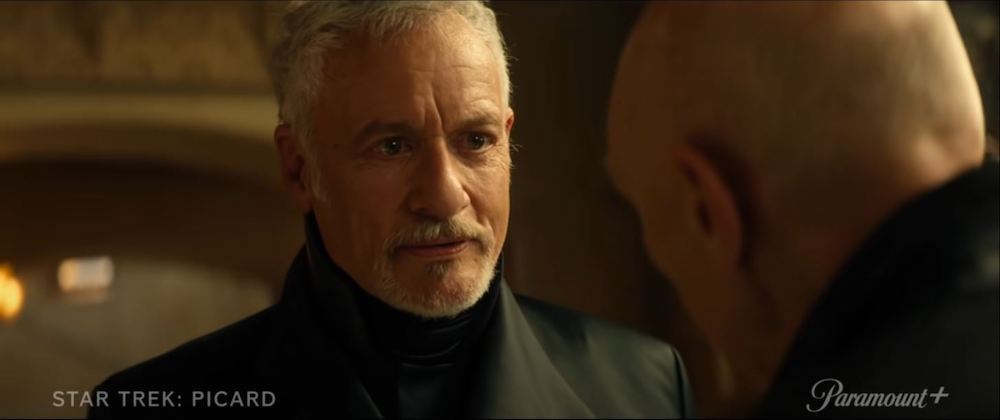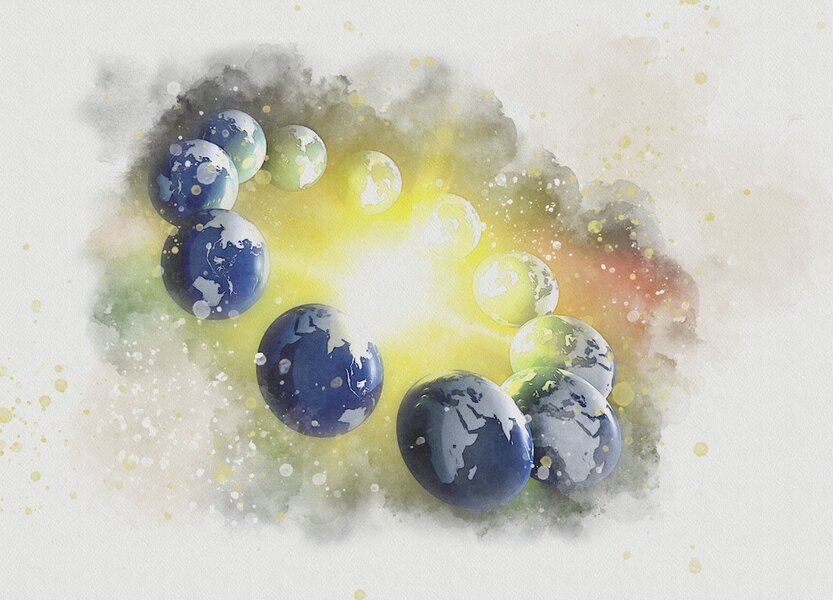Create a free profile to get unlimited access to exclusive videos, sweepstakes, and more!
So, you're in an alternate reality, what gives? The science behind 'Picard'
If the universe were just it would let this man live out his days on his vineyard. Alas...

Star Trek: Picard is back with Season 2 on Paramount+, which means we get to revisit the best captain in the history of the federation — don't @ me — back at work. Before we go any further, there will be spoilers for the Season 2 premiere after this sentence, you've been warned.
Picard leaned pretty heavily into the nostalgia factor during the first season, bringing back a number of characters from previous Trek series, and the season two premiere is no different. The episode is a bit of a slow burn but by the end the action hits warp factor 10.
Jean-Luc finds himself aboard a ship, adjacent the rest of the fleet, staring down an enormous Borg craft. When all of a sudden, the Borg queen, decked out in a flashy new aesthetic, transports through the shields and onto the bridge. It's the worst sort of family reunion and things go downhill very quickly. Jean-Luc is faced with an impossible decision, to initiate the self-destruct sequence before the queen can infiltrate the ship's computers and gain access to the rest of the fleet.
Obviously, Picard makes the right decision and destroys the ship, killing himself and everyone else onboard. Except… moments later he wakes in his home, in a wholly different version of reality. Which leaves Picard, his crew, and the viewers to wonder what the Vulcan's going on?
DID PICARD SIMPLY LOSE HIS HOLD ON REALITY?
Perhaps the most realistic, but least fun, explanation of what's going on is that Picard has lost his grip on reality. After initiating self-destruct, Jean-Luc emerges in a version of the world which is very different from the one he left. Suddenly, he's looking at the world and feeling as though it has been altered or falsified in some way. The world around him isn't the one he's supposed to be a part of.
This is actually a fairly common circumstance, experienced by people all over the world. According to studies, between one and two percent of the world's population experiences the sensation that either they or the world around them has been made wrong in some way, at least once in their lifetime.
These symptoms are a sign of depersonalization-derealization disorder. Depersonalization refers to a sensation of detachment from your own body or self, while derealization refers to a similar sensation about the world around you. People experiencing derealization might have the feeling that they are living in a movie or a dream, or that the world around them has been distorted or twisted out of true.
Some people have reported feeling as though they've been transported to an alternate version of reality and desperately need to find their way back to their “true” reality. That sounds an awful lot like the experience Picard is likely to have throughout the rest of the season. Although, he appears to be sharing the experience with the rest of his crew, which lends some support to the idea that it's actually happening. It also doesn't hurt that Q shows up and straight up tells him that he's been moved to another reality to continue the test which began in the first episode of TNG.
So, if Picard isn't suffering a mental health crisis, what is happening?
QUANTUM SUICIDE
The name of this thought experiment is unfortunate, but it's interesting to consider, and might serve as an explanation for how Picard and the rest of his crew found their way to an alternate reality following events which should have killed them.
You're likely already familiar with Schrödinger's Cat, but in case you're not, here's a brief primer. The thought experiment was first cooked up by Erwin Schrödinger as a way of exploring what he saw as a problem with the Copenhagen explanation of quantum physics. The central idea we need to consider is that quantum particles exist as probabilities until such time as they are observed. Meaning a particle can exist in two opposing states until looked upon by an observer. Schrödinger took this idea and set up a thought experiment in the following way. First, we have a cat locked in a box. Inside the box is a device which is capable of smashing a container holding a deadly poison. The poison container is opened only if a particle achieves one state or the other.
Because quantum states exist in superposition, meaning all possible states at once until observed, the cat inside the box must be both alive and dead until we open the box.
The idea of quantum suicide takes this same thought experiment but adds one additional twist. Instead of a cat inside a box, we have a human observer. Because a quantum state must exist in superposition until it is observed, the only possible outcome is that the poison is never activated. If it were, there would be no one alive in the box to observe it.
Essentially, a deadly scenario necessarily favors a shift toward realities in which the observer — in this case Picard and his entire crew — isn't dead. This thought experiment is considered perhaps one of the only ways to confirm the validity of the many worlds multiverse hypothesis. Although it would only prove the existence of the multiverse to the person, or people, inside the experiment. To everyone else, they'd just be living in the world they always lived in.
On paper, it appears to work, but the risk is immense. We don't recommend it. If you're dealing with thoughts of suicide, depersonalization, derealization, or other mental health stresses, please reach out for help. Whether other realities exist or not, we want you here, safe and healthy, so we can fix the future together.
If you or a loved one is experiencing a mental health crisis, call the suicide hotline: 1-800-273-8255 or text the Crisis Text Line: 741-741.




























